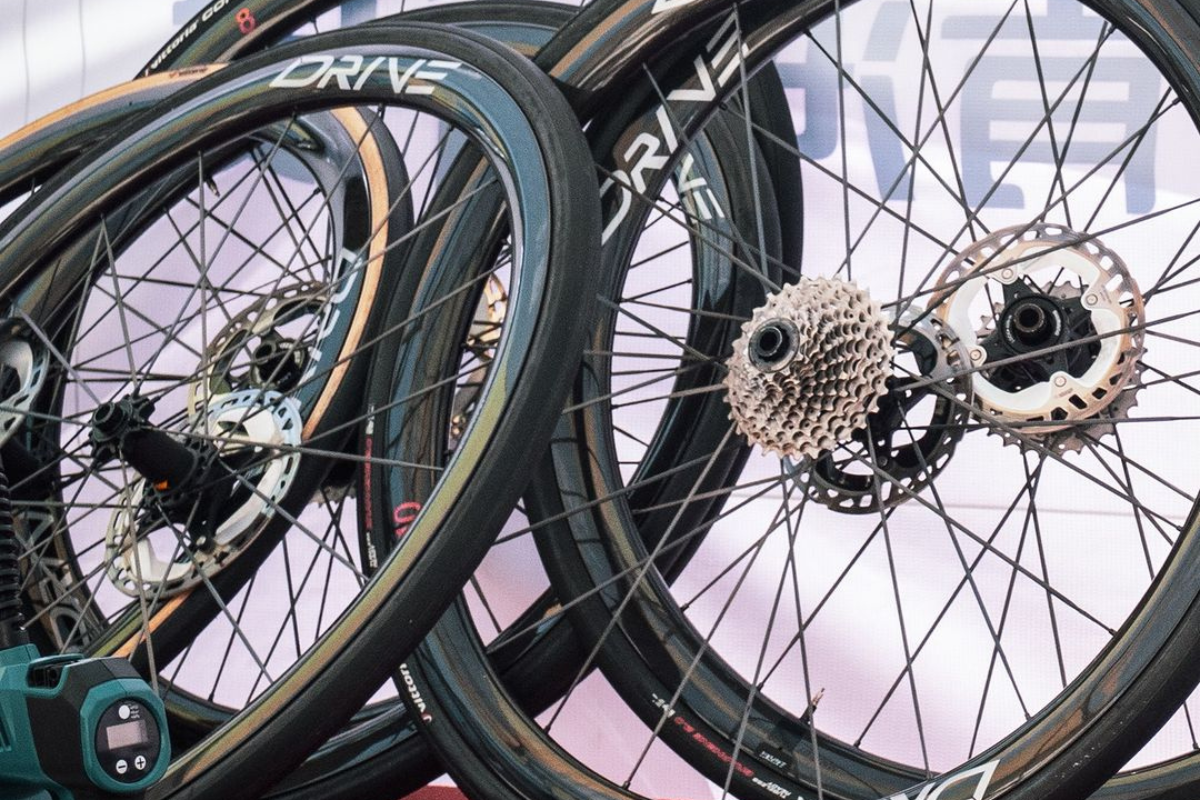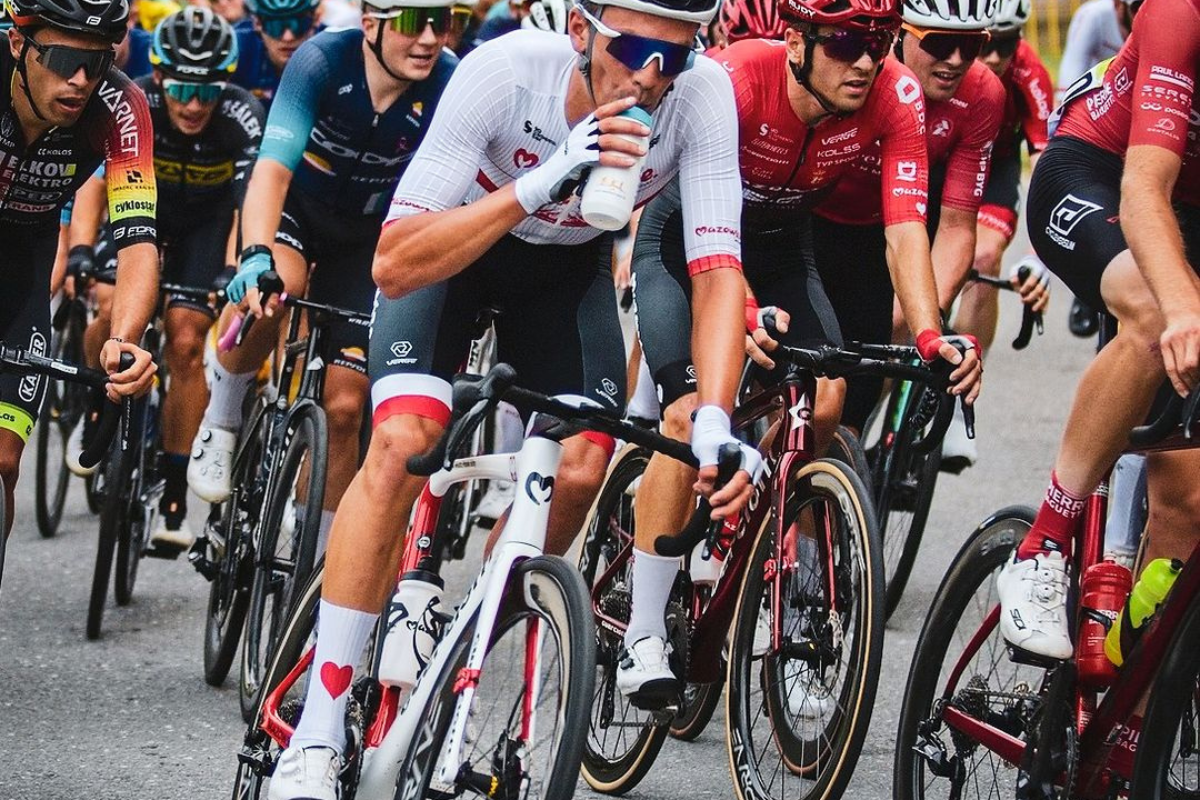Introduction
In the world of cycling, various metrics are used to measure a rider’s performance , such as speed, endurance, and cadence. However, one of the most critical metrics that often determines success in competitive cycling is the power-to-weight ratio (PWR). This key performance indicator influences everything from climbing efficiency to overall speed on flat terrains.
In this article, we will delve deep into the concept of the power-to-weight ratio, explaining what it means, how it is calculated, and its profound impact on cycling performance. By understanding PWR, cyclists of all levels—from recreational riders to elite athletes—can optimize their training and performance to reach their full potential.

What is Power-to-Weight Ratio?
The power-to-weight ratio (PWR), often expressed in watts per kilogram (W/kg), is a measure of the power output a cyclist can generate in relation to their body weight. Power, in this context, refers to the amount of energy the rider can produce, typically measured in watts, while weight refers to the rider’s total body mass.
Formula for Power-to-Weight Ratio:
This metric is crucial because it provides a more accurate representation of a cyclist’s ability than simply looking at their raw power output or weight alone. A lighter cyclist with a high PWR can outperform a heavier cyclist, even if the heavier rider generates more absolute power, especially in situations like climbing hills.
Understanding the Components: Power and Weight
To truly understand how the power-to-weight ratio influences cycling performance, we need to break down its components: power and weight.
Power (Watts)
Power in cycling is the amount of force a rider exerts on the pedals, measured in watts. It is the result of several factors, including muscular strength, cardiovascular capacity, and pedaling efficiency. Power can vary depending on different terrains and conditions.
Cyclists often use power meters to measure their output in real time, enabling them to monitor their performance during training and races. The more watts a cyclist can generate, the more power they can apply to the bike, allowing them to go faster. However, raw power alone does not guarantee success, as body weight plays a significant role in determining how efficiently that power is translated into speed.
Weight (Kilograms)
The second component of PWR is body weight. For a cyclist, especially in races involving elevation changes like hills and mountains, weight is a critical factor. The lighter a cyclist is, the less effort it takes to move their body weight uphill or across flat terrain. This is why professional cyclists, particularly climbers, are typically lean and lightweight, reducing the amount of mass they need to carry over distances.
However, while bike weight is not included in the PWR formula itself, it still plays a significant role in overall cycling performance, particularly in situations like climbing. When cycling uphill, both the cyclist’s body weight and the combined weight of the bike must be overcome by the power generated. This is where lightweight, high-performance cycling components can make a difference, particularly when it comes to wheels.
Among the most critical areas to reduce weight on a bike is the wheelset. A lighter wheelset not only reduces the overall weight but also improves acceleration and climbing efficiency due to reduced rotational mass. This is where companies like Elitewheels come into play. Road, Gravel, MTB and TT wheels from Elitewheels specifically designed to meet the needs of competitive cyclists. With a focus on weight saving, these wheels provide a crucial advantage by reducing the rotational mass of the bike, allowing cyclists to conserve energy and improve efficiency, especially on long climbs and during fast accelerations.

Steps to Calculate Power-to-Weight Ratio
Calculating the power-to-weight ratio is straightforward once you know your power output and body weight.
Measure Your Power Output:
Use a power meter to measure your average power over a given period, typically measured in watts (W). For a more accurate assessment, many cyclists perform a Functional Threshold Power (FTP) test, which measures the maximum power a rider can sustain for about an hour.
A Functional Threshold Power (FTP) test is a cycling performance test that measures the highest average power output (in watts) a cyclist can sustain for an hour without fatigue. It’s often used by cyclists and coaches to gauge fitness levels, set training zones, and track progress over time. It can be calculated from the following aspects:
Duration: The standard FTP test involves riding as hard as possible for a set time, commonly 20 minutes, then using a formula (typically 95% of the average power from that test) to estimate the 60-minute FTP.
Power Measurement: It requires a power meter or a smart trainer to measure the power output in watts.
Purpose: The result helps tailor personalized training plans and ensures cyclists work at the right intensity for intervals, endurance, and recovery sessions.
Weigh Yourself:
Accurately measure your body weight in kilograms. Remember to account for any additional weight, such as clothing or equipment.
Factors Influencing Power-to-Weight Ratio
Several factors affect a cyclist’s power-to-weight ratio, both from a physical and training perspective. Understanding these factors can help cyclists improve their PWR and overall performance.
Training Intensity and Consistency
Training plays a central role in increasing a rider’s power output. Specific types of cycling workouts, such as interval training, tempo rides, and endurance sessions, can boost cardiovascular endurance, muscular strength, and pedaling efficiency. By consistently pushing your limits and progressively increasing training intensity, you can raise your power output over time. Learn how to train your muscle.
Body Composition
Body composition directly influences PWR. A cyclist with a higher percentage of lean muscle mass will produce more power than someone with a higher body fat percentage at the same weight. Therefore, optimizing body composition by losing excess fat and maintaining or gaining muscle can significantly improve PWR.
It’s important for cyclists to focus on losing fat while preserving lean muscle mass to maintain their power production while becoming lighter.

Nutrition and Weight Management
Proper nutrition is essential for both fueling workouts and achieving the ideal power-to-weight ratio. Cyclists need to carefully manage their calorie intake, ensuring they consume enough to fuel performance without overeating and gaining unnecessary weight. Likewise, if the goal is to lose weight, doing so gradually and in a healthy manner ensures that the rider doesn’t lose muscle mass or sacrifice power.
Nutrition Tips
Caloric Deficit Without Sacrificing Performance
Achieving a healthy weight often starts with a caloric deficit, meaning you consume fewer calories than your body burns. However, in a sport like cycling where energy demands are high, creating too large a deficit can lead to fatigue and loss of muscle mass, impairing performance. To find a balance:
Prioritize Protein for Muscle Maintenance
When cutting calories, it’s essential to maintain lean muscle mass, as muscle directly contributes to power output. Protein supports muscle repair and growth, especially after long rides or intense training sessions.
Carbohydrates: Fuel for Performance
Carbohydrates are the body’s primary energy source during cycling. While reducing overall calorie intake might tempt some cyclists to cut carbs, this can be counterproductive, especially for endurance rides.
Fat: Essential for Endurance
Dietary fat, while calorie-dense, plays an important role in long-distance endurance cycling. It helps maintain energy levels during prolonged rides when carbohydrate stores become depleted.
Rest and Recovery
Rest and recovery are vital components of any cycling training program. Intense workouts stress the body, and rest periods allow for recovery, muscle repair, and adaptations that improve power output. Overtraining or insufficient rest can lead to fatigue, reduced power production, and even injuries, all of which negatively impact PWR.
Age and Gender
Age and gender can influence PWR, although they are not definitive limitations. Typically, younger cyclists have an advantage in terms of recovery, muscle growth, and endurance. Similarly, men generally have higher absolute power outputs than women due to differences in muscle mass and body composition, but women can achieve exceptional PWR values relative to their weight, especially in endurance events.

The Impact of Power-to-Weight Ratio on Cycling Performance
Now that we understand the components of PWR, let’s explore how this metric directly affects cycling performance across various terrains and racing scenarios.
Climbing Hills and Mountains
The power-to-weight ratio is particularly important when climbing hills or mountains. Gravity becomes a significant factor in climbing, and the lighter you are, the less gravitational force you need to overcome. This means that cyclists with a higher PWR can ascend more efficiently and quickly than those with lower PWR.
For example, during mountain stages of the Tour de France, the best climbers typically have a PWR of around 6 to 6.5 W/kg. This allows them to attack steep climbs at high speeds, leaving heavier riders behind, even if those riders can generate more total power.
Flat Terrains
On flat terrain, power output becomes more critical than weight. While PWR still matters, it is not as crucial as it is for climbing. On flats, cyclists with higher raw power output can maintain higher speeds due to reduced influence from gravity.
That said, a high PWR is still advantageous on flat terrain when combined with excellent aerodynamics. Lightweight cyclists with high PWR can generate significant speed while using less energy than heavier riders.
Time Trials
In time trials, where speed and pacing are key, a high power-to-weight ratio provides a distinct advantage. Time trialists aim to maintain high, steady power over the course of the event. Cyclists with a strong PWR can sustain high speeds for longer periods, leading to faster times.
Aero positioning, power output, and a rider’s weight all contribute to their overall performance in a time trial, but PWR remains a critical measure of their ability to push hard and fast over long distances.
Sprint Finishes
While PWR is essential in endurance scenarios and climbs, sprinters are more focused on short bursts of maximum power. In sprint finishes, raw power outweighs PWR. Heavier cyclists with more muscle mass can often generate more power for a short period, allowing them to excel in high-speed sprints. Thus, sprinters tend to have lower PWRs compared to climbers but possess the necessary explosiveness to succeed in short, intense efforts.
Strategies to Improve Power-to-Weight Ratio
Cyclists aiming to improve their PWR can do so by focusing on both increasing their power output and managing their body weight effectively. Here are some strategies to enhance your PWR:
Interval Training
High-intensity interval training (HIIT) is one of the most effective methods for improving power. Short bursts of intense effort followed by recovery periods push your cardiovascular and muscular systems to adapt, increasing both strength and endurance. Over time, this will boost your average power output.
Strength Training
Off-the-bike strength training is another excellent way to enhance power. By targeting key muscle groups used in cycling, such as the quadriceps, hamstrings, glutes, and core, cyclists can generate more force during pedaling. Weightlifting, plyometrics, and resistance exercises all contribute to muscular development and higher power output.
Optimize Body Composition
Reducing body fat while maintaining muscle mass is critical for improving PWR. This requires a combination of disciplined nutrition and endurance training. Cyclists should aim for a sustainable calorie deficit if weight loss is needed, focusing on nutrient-dense foods that support recovery and muscle maintenance.
Monitor and Adjust Training Load
Cyclists should regularly assess their training load and make adjustments based on their goals. Incorporating FTP tests and using power meters during training helps track improvements in power output. Adjusting training based on these metrics ensures that cyclists continually challenge their bodies without overtraining.
Fueling and Hydration
Proper fueling before, during, and after rides ensures that the body has the energy it needs to perform at its best. Dehydration and poor nutrition can negatively affect power output and endurance, so cyclists should focus on consuming adequate carbohydrates, proteins, and electrolytes to support performance and recovery.
Conclusion
The power-to-weight ratio is a fundamental performance metric in cycling, providing insight into a rider’s efficiency and ability to generate power relative to their weight. A higher PWR is a strong predictor of success in hilly or mountainous races, time trials, and endurance events, making it a key focus for cyclists looking to improve their performance.
By understanding the components of PWR and implementing strategies to increase power output while managing body weight, cyclists can significantly enhance their performance across all terrains. Whether you’re an aspiring professional or a recreational rider, optimizing your power-to-weight ratio can make you faster, stronger, and more competitive on the bike.



